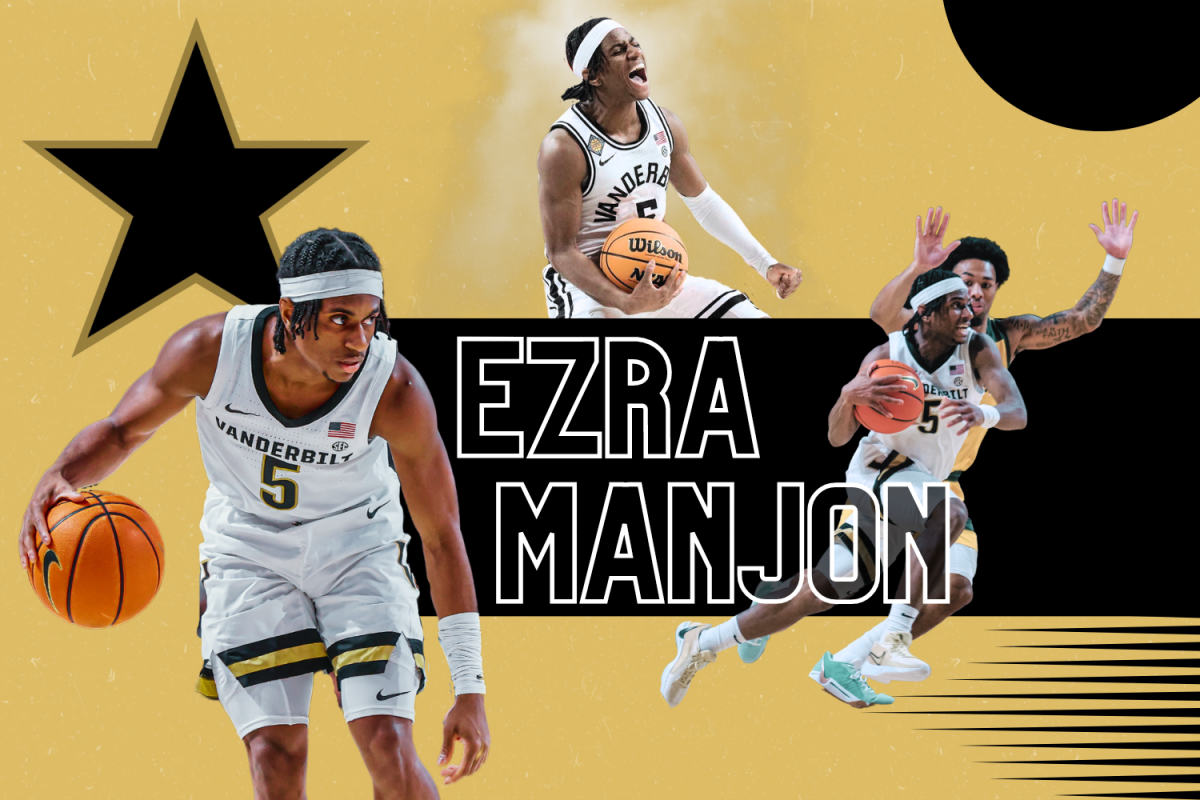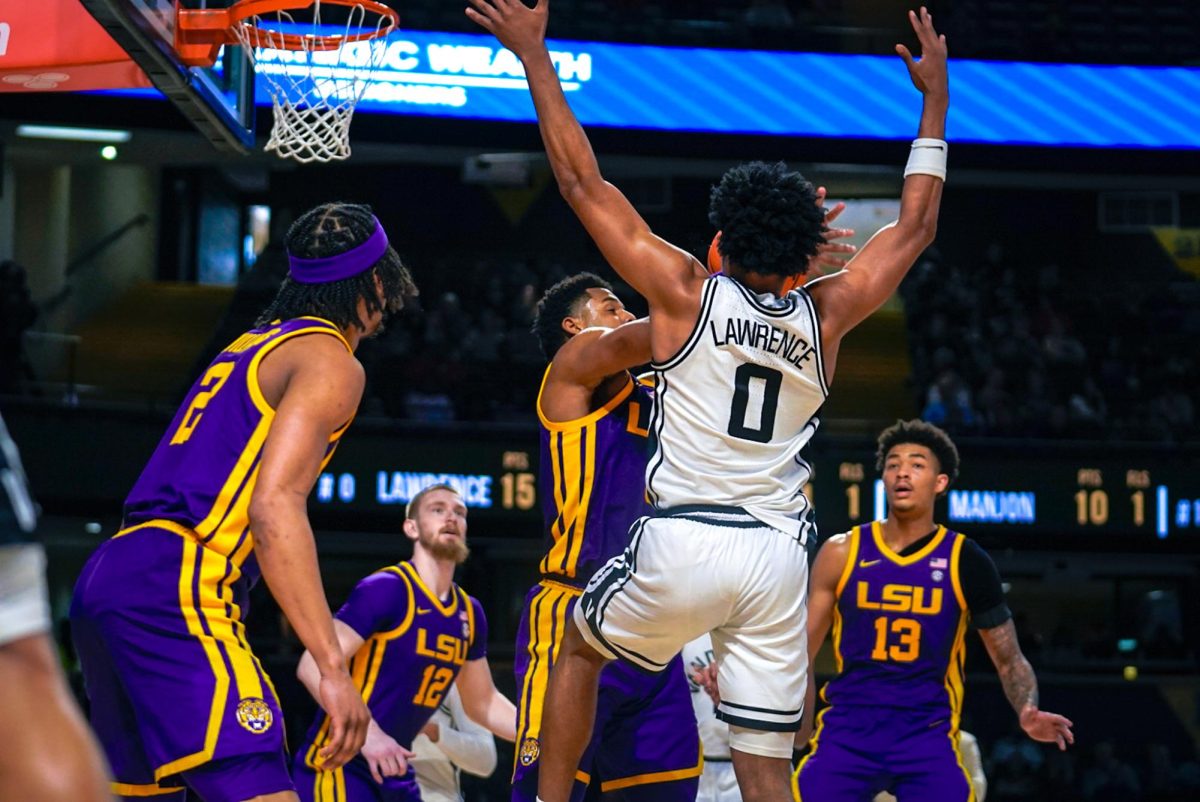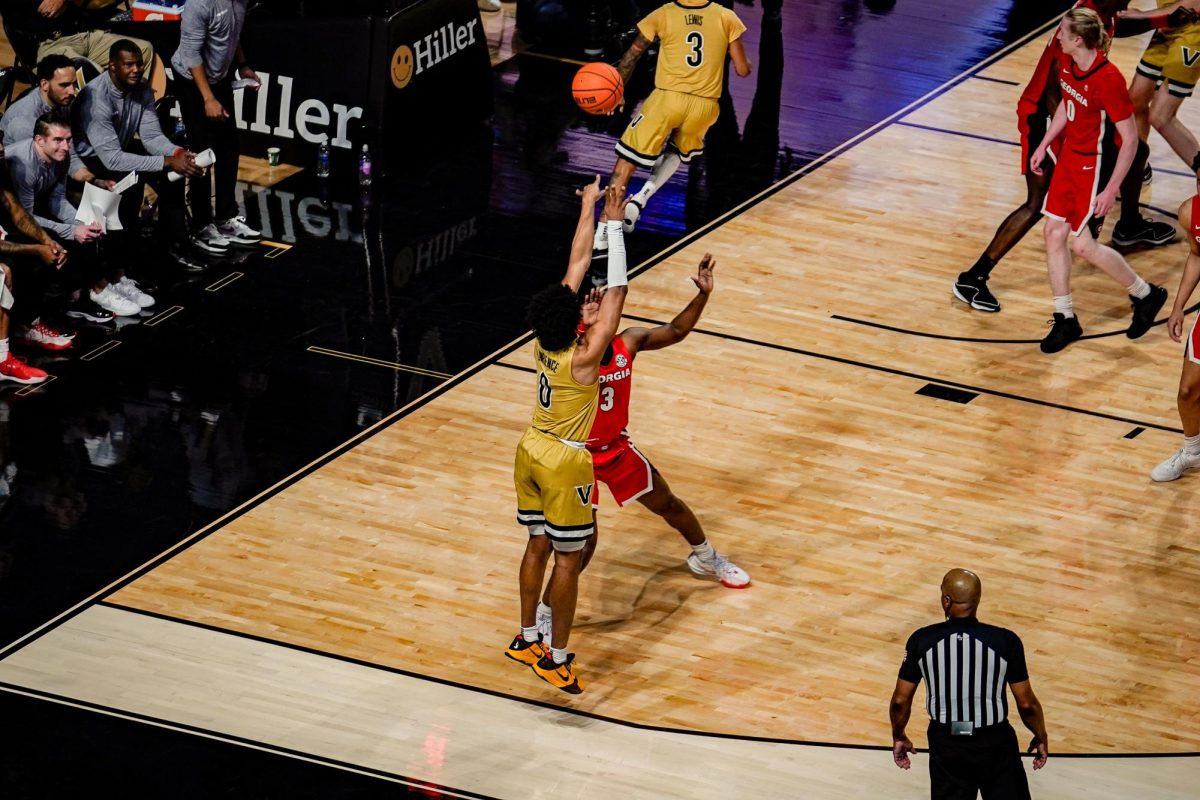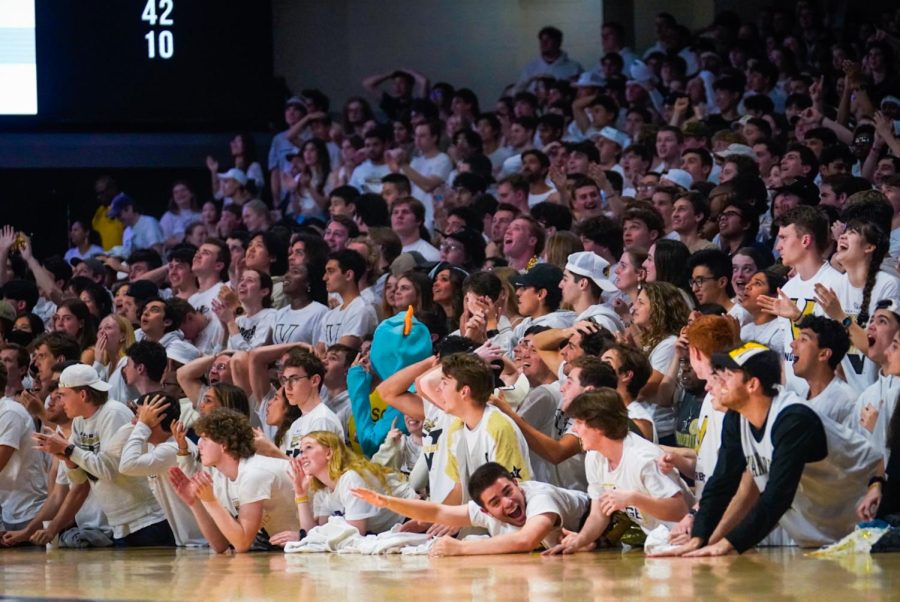“We haven’t been able to get over the hump, but it was great to get over it today,” Jerry Stackhouse said after Vanderbilt’s 68-61 win over Missouri.
In Year 5 of the Stackhouse regime, “getting over the hump” doesn’t mean making the NCAA Tournament, competing for the SEC title or even getting ranked in the AP Top 25. It means getting a single SEC win by virtue of a single-digit victory over the last-place team in the conference standings.
But, Stackhouse does have a point. A win is a win, and an SEC win was something the Commodores hadn’t accomplished prior to Feb. 3. It will, at a minimum, keep the Commodores just above the stench of the infamous 2018-19 season that saw the firing of Bryce Drew.
Maybe this is the end of the road for Stackhouse. Maybe it isn’t. After a 101-44 loss to Alabama on Jan. 31 of last season, the feeling on West End was largely the same as it is today. And yet, Stackhouse survived.
It’s eerily similar that the first game of February was the turning point for Vanderbilt last season. A 74-71 victory over Ole Miss was followed by a Tyrin Lawrence buzzer-beater to best Tennessee, and the Commodores won eight of their last nine regular season games en route to the No. 6 seed in the SEC Tournament. The Commodores went on to win two games in Nashville, got all the way to the quarter finals of the NIT and breathed new life into Stackhouse’s career with a contract extension and SEC Co-Coach of the Year honors.
The Missouri win could have been this season’s jumping-off point for yet another end-of-season turnaround. That’s certainly what Stackhouse thought, or wanted the public to believe, in the post-game press conference.
“This team is capable of doing something down the stretch, and we needed this win to get us going,” Stackhouse said.
Three days later, the Commodores hosted No. 17 Kentucky with a chance to repeat history. This was their Tennessee moment — the game where an improbable upset could propel Vanderbilt back to relevancy and spark the beginning of something new.
That idealism came crashing down mere minutes after the opening buzzer. The Wildcats went up by double digits six minutes into the game, led by 16 at half and finished the game with a 109-77 win over a team that had beaten them twice a year prior. It is only the most recent in a long line of humiliating defeats in the Stackhouse era.
The team currently occupying West End will not be the next ImprobaDores. There’s no seven-foot shotblocker coming to save them, no 3-point shooting improvement to bail them out and no semblance of a game plan that can resuscitate their moribund offense. Stackhouse said after the Kentucky game what everyone knows to be true.
“We have a little bit of catching up to do [in terms of talent],” Stackhouse said.
What Stackhouse neglected to mention is that only one person is responsible for that lack of talent: himself. In the transfer portal era, a roster can be remade in a single offseason.
Jerome Tang landed Markquis Nowell and Keyontae Johnson in the portal and got Kansas State to the Elite 8 in his first year on the job. Lamont Paris overhauled his roster after a subpar first year at South Carolina, landing four of the No. 15 Gamecocks’ top five scorers in the offseason.
There’s no reason for Vanderbilt to have the deficiencies it does in the fifth year of its current coaching regime. The responsibility for that falls squarely on Stackhouse and no one else, and he may very well pay for it in the offseason.
But, for the time being, this is the roster Vanderbilt has, and that roster has nine more regular season games to play. The Missouri win isn’t the start of another extraordinary turnaround, but perhaps it isn’t the last triumph either. The Black and Gold still get to play Arkansas, Georgia and LSU. It’s not inconceivable that they win another game or two, though a double-digit-win season seems out of the question.
If Vanderbilt’s going to right the ship — not completely turn it around, but at least steer it away from both Scylla and Charybdis — what lessons can be drawn from the Missouri win as to how they might do so?
Manjon foul hunting
Vanderbilt’s preseason pitch was fairly straightforward: two high-level guards in Lawrence and Ezra Manjon and a collection of wings that can shoot. After flirting with the transfer portal and the draft, Lawrence’s fourth year with the Black and Gold is a statistical copy-and-paste of his third year but with lower efficiency across the board. Vanderbilt’s wings, most notably Evan Taylor, also haven’t met the expectations for high level perimeter offense that were set before the season.
That leaves Manjon, an undersized guard without a perimeter shooting touch who dribbles the air out of the ball like the CPU on NBA 2k. He’s not fit to the task of running a high-powered college offense, but there are definitively things he does well: hitting mid-range jumpers, slipping past the defense for open layups and getting to the foul line.
Say what one will about the growth of flopping and the abuse of it by stars like Joel Embiid and James Harden, but getting to the free throw line regularly is a skill. Despite it being gimmicky and unenjoyable to watch, it’s a way to slow the game down and limit the fastbreak opportunities for the other team’s offense.
Vanderbilt cannot defend a fastbreak to save its life. Missouri rushed out to a 20-9 lead on that principle. The Commodores also can’t seem to hit threes or connect with perimeter shooters even when the opposing defense leaves them wide open. If that’s going to continue to be the case, then Vanderbilt should look to game the system as much as possible with Manjon driving to the rim in search of fouls.
Manjon this season is shooting an elite 83% from the free throw line on 5.3 attempts per game, a career-high for the fifth-year senior. His 12/12 performance was integral to the win over UNC Greensboro early in the season, and five of them in the final minute against Missouri helped to ice the game.
Set a screen at the top of the key, let Manjon dribble into the paint one-on-one against a post player and let him take the contact in line for a foul. It slows the game down and lets the Commodores get back on defense, two things they desperately need to win games.
Youth movement
While Manjon and Lawrence led the team in scoring in the win over Missouri, it was Vanderbilt’s freshmen and sophomores that stepped up in the biggest moments. Freshman Isaiah West had the best game of his young career, subbing in early in the first half to deliver two big threes for the Commodores as they played catch-up.
West is just the kind of two-guard that Vanderbilt needs to slot next to Manjon or Lawrence with their on-ball style of play. With Taylor not providing the off-ball shooting touch that Stackhouse and Co. desired, it’s time to start looking elsewhere for answers on the wing. West doesn’t have the bulk that Taylor provides on defense, but it’s not as if the latter has been a stalwart at any point this season, nor is Vanderbilt’s biggest defensive problem on the perimeter.
Tied with West for third in points against Missouri was sophomore Ven-Allen Lubin, whose impact on rebounding was arguably even more important for the Commodores than his scoring touch. It’s beating a dead horse at this point to note that Vanderbilt is a woeful rebounding team, but the Notre Dame transfer has markedly improved in recent weeks, averaging three offensive rebounds per game over the last five matchups.
Playing the de facto center position at 6’8’’, Lubin’s size deficiency is very similar to that of Sacha Washington on the women’s side. Like Stackhouse’s squad, Vanderbilt Women’s Basketball has struggled with rebounding in SEC play, getting beat by 22 on the boards against LSU. Even though it didn’t work against Angel Reese and a Tigers team that is gigantic by league standards, there’s perhaps something to learn from Shea Ralph’s use of freshman big Khamil Pierre in the starting lineup.
In the same vein, testing out freshman JQ Roberts next to Lubin wouldn’t be the worst idea cooked up on West End in recent years. It would obliterate any spacing the Commodores hope to have, but it’s not as if more perimeter-friendly lineups have translated to scoring for Vanderbilt anyway. If the team can’t shoot in smaller configurations, it might as well not shoot with larger lineups that pose a better chance at rebounding.
It’s a trap
The Commodore faithful have been raucous this season in noting the different trajectories between Ralph’s rising squad and Stackhouse’s cratering program. Even after a five-game losing streak, Vanderbilt Women’s Basketball still has almost three times as many wins as their male counterparts despite being picked to finish last in the SEC.
When they were winning at a record pace, Ralph and Co. were most notable for their use of a trap defense — sending two defenders to or past half court to ensnare the opposing ball carrier. The strategy works wonders when facing an offense without a natural point guard or high-level perimeter shooting, and it catapulted Vanderbilt Women’s Basketball to a place of national recognition. Could the same defense work for their men’s counterpart in Memorial Gymnasium?
There’s reason to think it could, or at least that it wouldn’t cause a marked decline from where the Commodores are now. Vanderbilt has Texas A&M and Arkansas left on its schedule, two of the three worst 3-point shooting teams in the SEC, besides Vanderbilt. Those two squads are also in the bottom three of the SEC in assists per game, with upcoming opponent Georgia slotting in at fourth to last.
If there were ever a time for Vanderbilt to run a trap defense, it would be against other lowly programs that struggle to distribute the ball and shoot from beyond the arc. It’s also not as if this would be an entirely new concept for the Commodores to run — they’ve selectively used the trap on individual possessions this season.

Like Stackhouse said, Vanderbilt has catching up to do in terms of its roster talent. If Vanderbilt’s players can’t stick with their defenders one-on-one, perhaps it’s time to get a little gimmicky and start creating the havoc plays that the Commodores so desperately need on defense. At least it would make the games more entertaining, and that’s more than needed this year on West End.










